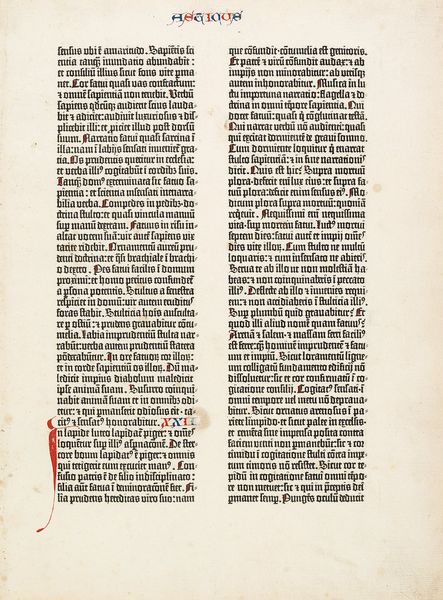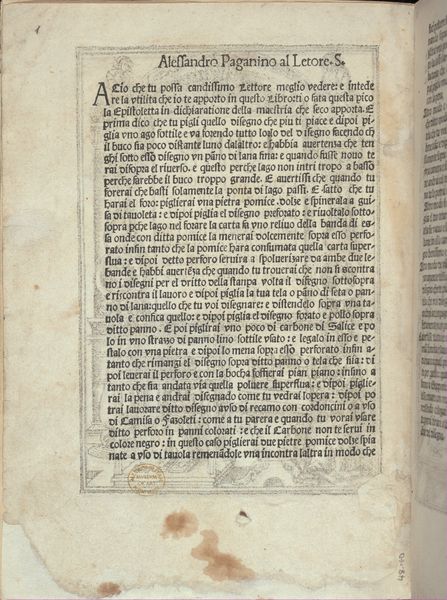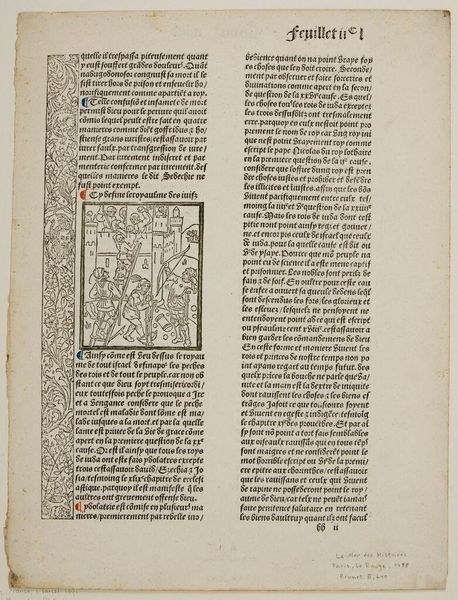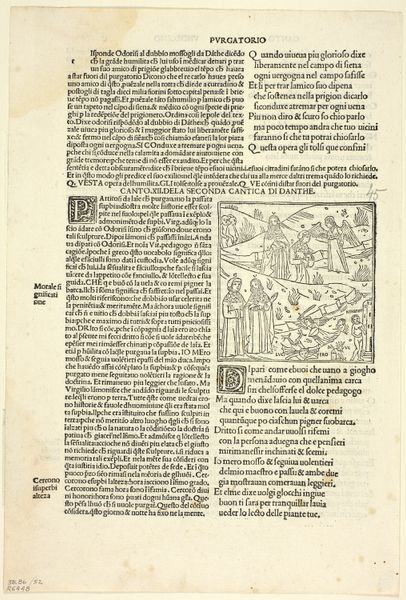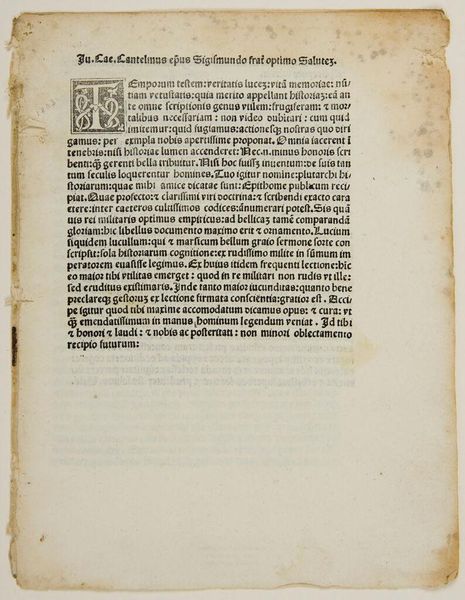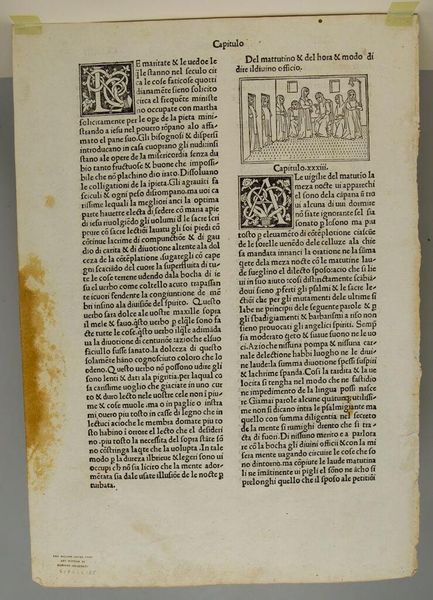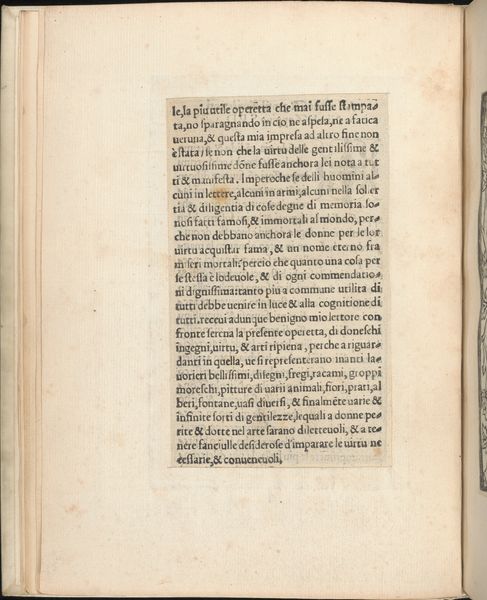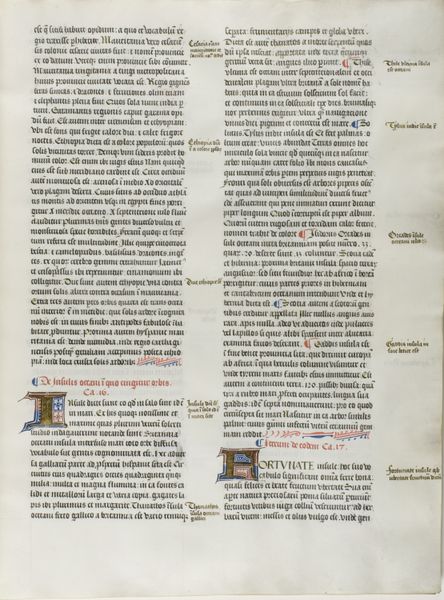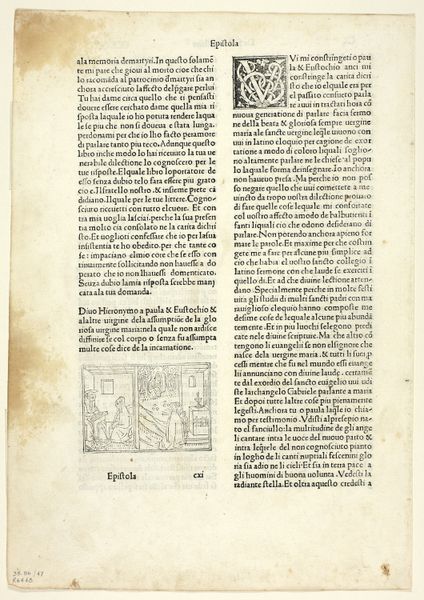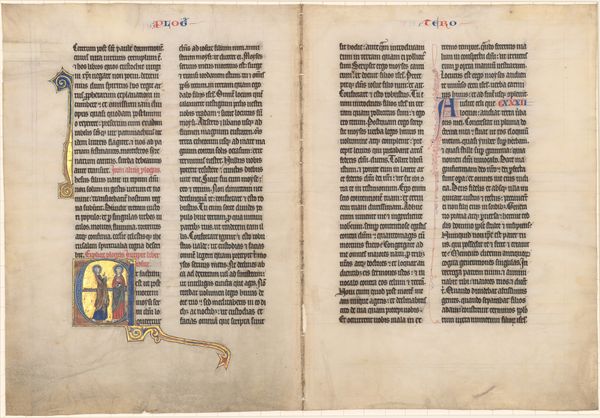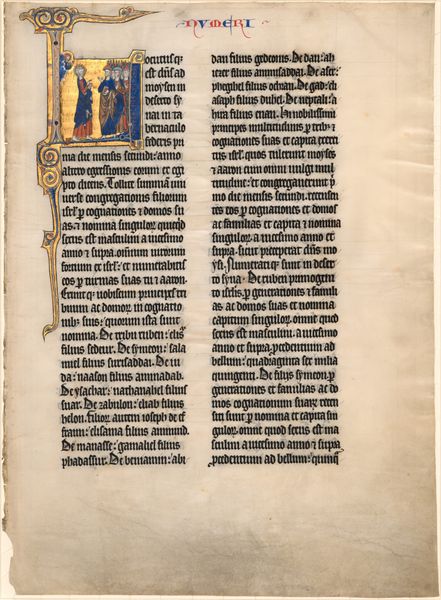
drawing, print, paper, typography
#
drawing
#
medieval
# print
#
book
#
editorial typography
#
gothic
#
paper
#
typography
Dimensions: 287 × 193 mm (text); 392 × 285 mm (sheet)
Copyright: Public Domain
Editor: We’re looking at a leaf from the Gutenberg Bible, printed sometime between 1454 and 1455 by Johannes Gutenberg. The dense blackletter script is really striking. It almost has a sense of architectural weight to it. What do you see in this piece, from a materialist perspective? Curator: Well, first, I see the culmination of immense labour. Think about the physical creation of each letter punch, the casting of individual pieces of type, and the construction of the press itself. The uniformity you observe is a testament to a radical shift in the means of cultural production. It represents early industrialized labor practices. Editor: So, beyond the religious text, it’s more about the labor involved? Curator: Precisely. It's about democratizing information. Prior to this, knowledge was meticulously hand-scribed, keeping it confined to the elite. Consider the social implications! With printing, suddenly the ability to reproduce texts en masse created access for others beyond the traditional priestly class. This shift challenges the idea of 'high art' created solely by master artisans and acknowledges other labor forms as having cultural value. Editor: That’s interesting, how a mass-produced object could carry as much or more cultural weight as a painting, for example. Does the specific material, paper, play a role? Curator: Absolutely. Paper, a more readily available material than parchment, allowed for broader consumption. Gutenberg’s ingenuity lay not just in invention, but in his understanding of material availability and market demand, even using wine presses to mechanize production. These leaves originally consumed one of only 180 copies printed. What did people do with all of the other pages? Editor: Fascinating! So it's not just about the finished object, but the whole system of its creation and the society it enables. Curator: Exactly. This leaf reveals a complex interplay of labor, materials, and burgeoning consumer culture of the Renaissance. This bible reveals a great deal more about technology and consumption of the 15th century than scripture.
Comments
No comments
Be the first to comment and join the conversation on the ultimate creative platform.
